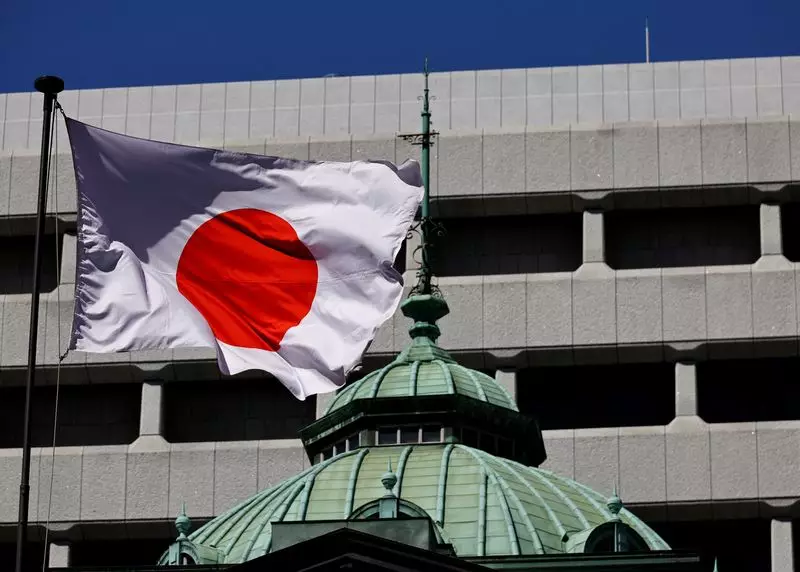In a landscape marked by volatility and uncertain prospects, the Bank of Japan (BOJ) stands at a pivotal crossroads in its monetary policy strategies. Recent deliberations among BOJ policymakers reveal a spectrum of viewpoints regarding the timing for potential interest rate hikes, particularly in light of external influences such as the outcome of the recent United States presidential election. The implications of these discussions not only reflect on Japan’s domestic economic landscape but offer insight into the broader interconnectedness of global markets.
The BOJ’s October meeting summary unveiled a divergence of opinions among board members about the pressing need to adjust interest rates amidst fluctuating global market dynamics. Prior to the November 5 election, there was apprehension that shifts in the yen would significantly impact Japan’s economic recovery trajectory. While many recognized the decreased threat of a hard landing in the U.S. economy, the lingering desire to mitigate market volatility was evident. As noted by BOJ officials, speculation stemming from impending electoral outcomes necessitated a cautious approach to any potential policy adjustments.
The election of Donald Trump heralded a significant rally in global stock markets, with the dollar gaining against the yen, which momentarily eased some immediate concerns among BOJ members. However, underlying tensions remained, especially with fears rising around possible trade tensions and a return to higher tariffs. Analysts warned that any steps towards protectionist policies could exacerbate inflation risks, complicating the Federal Reserve’s trajectory for interest rate adjustments in the U.S. Such scenarios could, in turn, impact Japan’s own economic landscape and necessitate a reevaluation of the BOJ’s monetary stance.
Amidst this tumultuous backdrop, some board members exhibited a cautious disposition, advocating for a more deliberate approach towards any future rate increases. The call for patience underscores a recognition of Japan’s vulnerable economic sectors, particularly among households and small businesses susceptible to rising import costs associated with a weaker yen. The need for a “wait-and-see” strategy resonates deeply with those members who emphasized the importance of monitoring U.S. economic stability before further adjusting Japan’s monetary policy.
One noteworthy perspective expressed during the discussions pointed out that a reversal in the trend of a weak yen could be beneficial for domestic consumers severely impacted by the rising costs of fuel and raw materials. Given this vulnerability, the consequences of a hasty policy shift could be far-reaching, destabilizing Japan’s post-pandemic recovery efforts.
While external market forces play a crucial role in shaping BOJ policy, it is essential to consider domestic economic indicators and inflationary pressures as fundamental drivers of monetary decisions. The recent hikes in interest rates, notably the decision to raise rates to 0.25% in July, were primarily motivated by inflation risks associated with a depreciating yen. BOJ Governor Kazuo Ueda’s acknowledgment of these inflationary concerns serves as a reminder that the interplay between global and domestic factors is increasingly complex.
However, the BOJ is also tasked with the challenge of having to convincingly communicate its policy intentions to maintain market confidence. A dual strategy—acknowledging the economic conditions that justify rate hikes while simultaneously retaining flexibility in approach—seems imperative in navigating this uncertain terrain.
As the situation continues to evolve, the coming months will be critical in determining the course of the BOJ’s monetary policy. The prevailing sentiment among economists, as indicated in a recent Reuters poll, suggests a cautious outlook, with many projecting that no immediate rate hikes will occur before the end of the year. Nonetheless, a significant majority anticipates potential increases by the end of March. The BOJ’s decision-making will undoubtedly remain influenced by the unfolding developments both locally and internationally.
The BOJ finds itself in a substantially precarious position; one characterized by contrasting views within its ranks on how to approach future interest rate adjustments against a backdrop of global economic fluctuations. The central bank’s careful navigation of these complexities will be crucial in fostering economic resilience within Japan, underscoring the delicate balance it must maintain in pursuit of sustainable growth.

